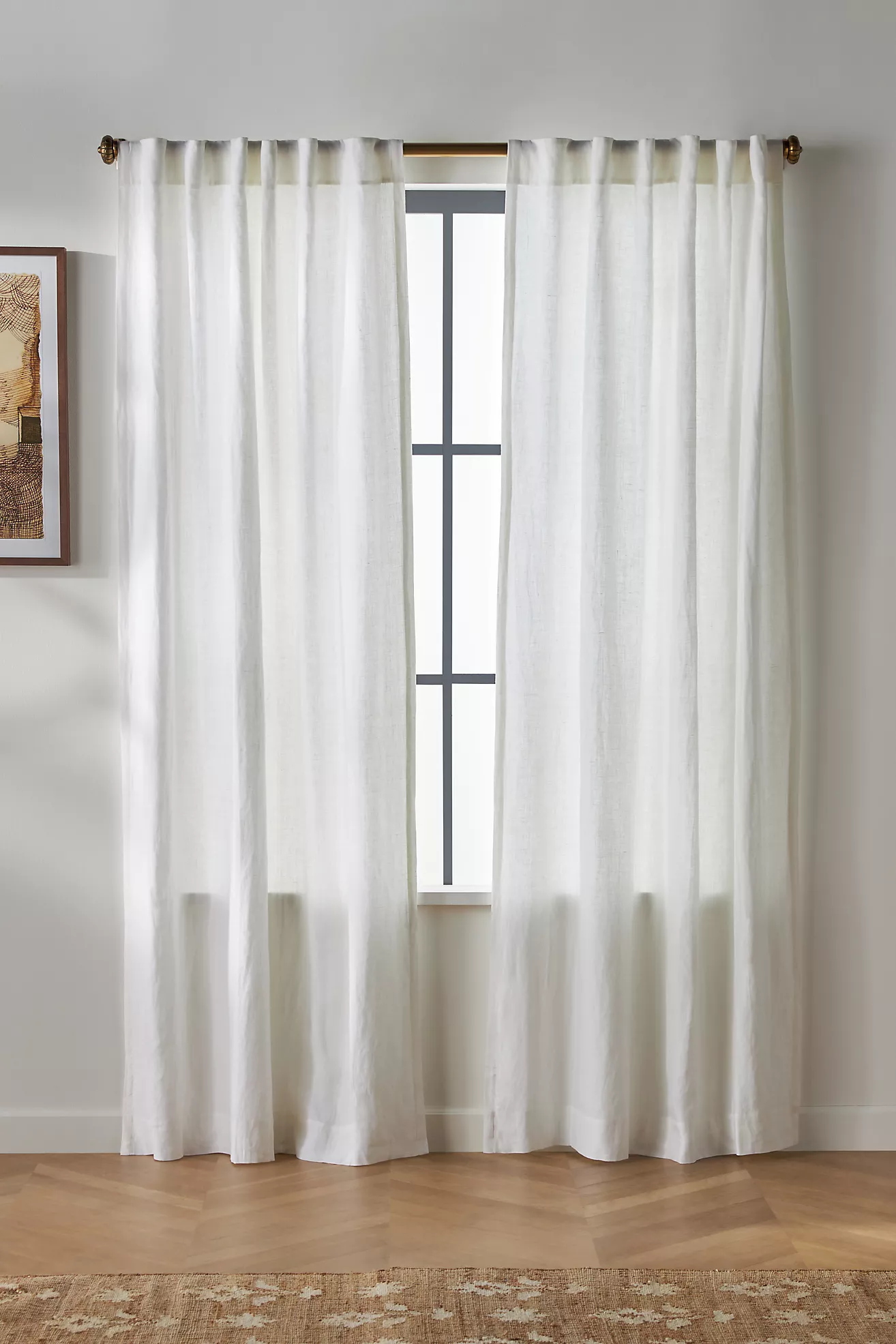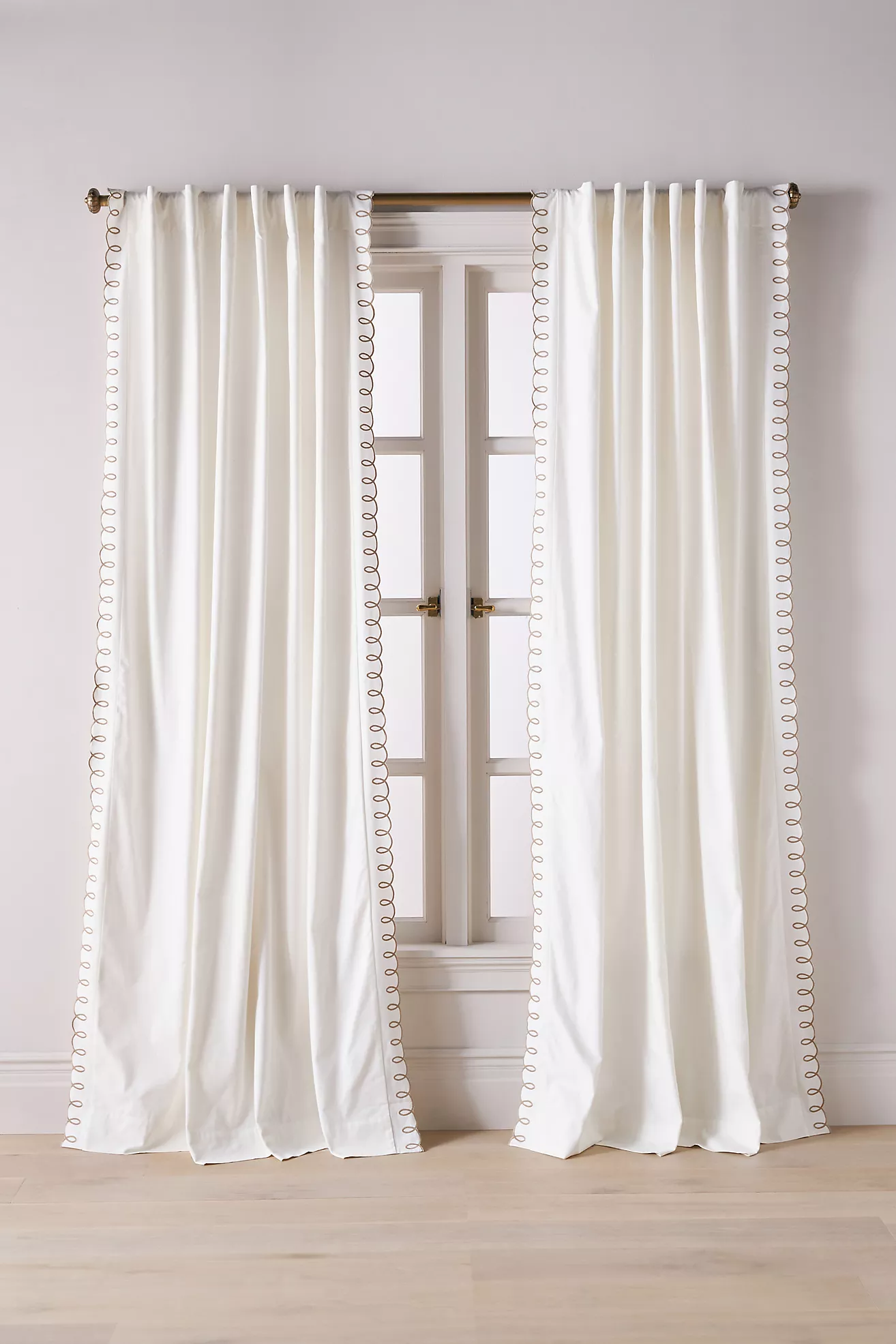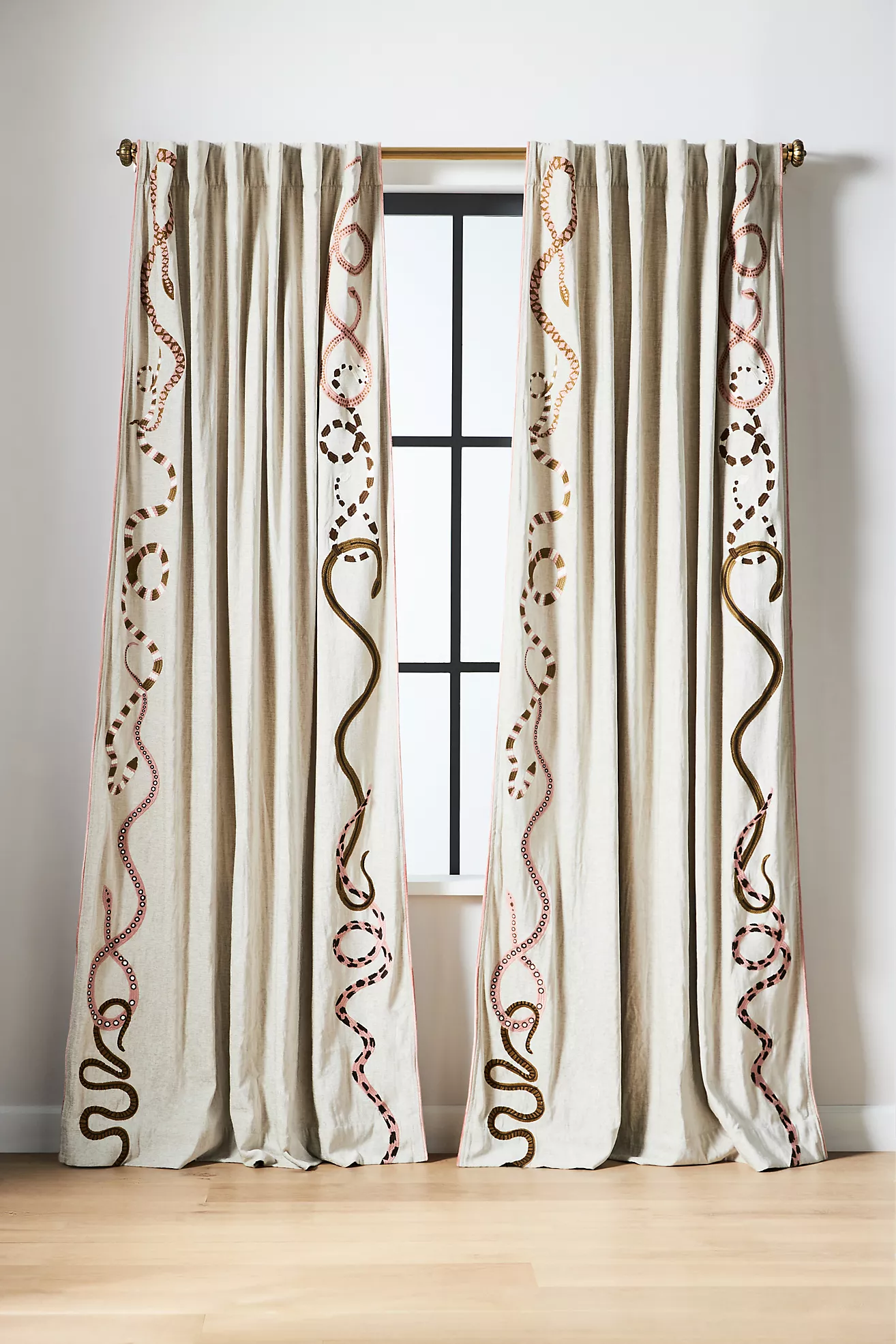Are Curtains Out of Style? Of Course Not, but Some Designs Will Date Your Space Faster — Here's What to Know
We asked interior designers whether curtains are still stylish, and they all agreed

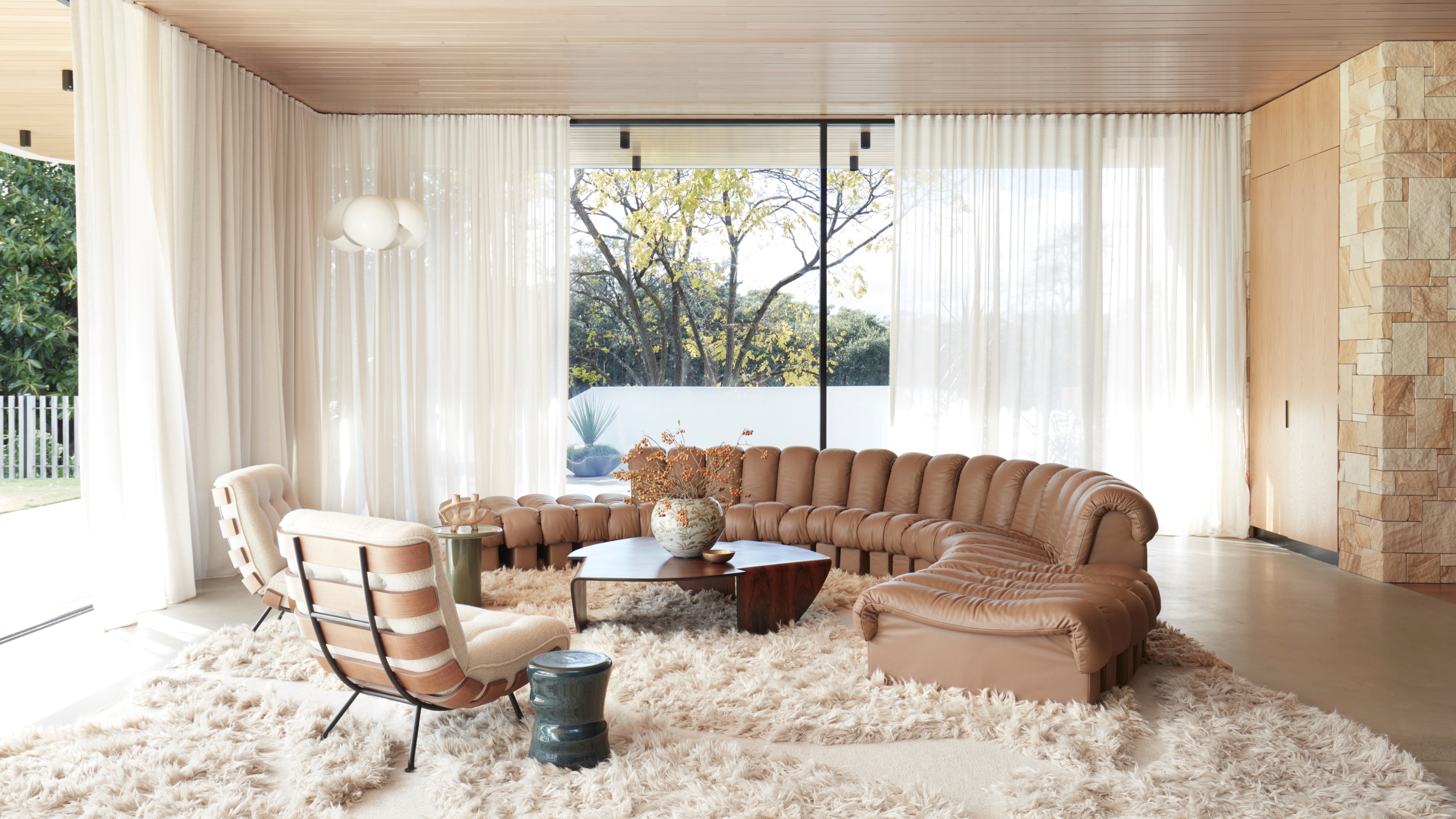
Before you start looking over at your current curtains with dread, I can confidently assure you that, no, curtains are not out of style. But — there are certain styles that will make your space feel contemporary right now, while others will quickly date it. The distinction lies in treating your window treatments as a design opportunity, rather than something you simply have to do.
Curtains serve several important functions in our interiors. Beyond just the obvious practicalities of privacy and controlling light, curtains add crucial texture and coziness to a space. It's also an opportunity to introduce color and pattern, enhancing the richness of a space.
"Today’s most stylish spaces show a shift away from heavy, overly formal drapery toward lighter, more organic looks," says interior designer Nina Lichtenstein. "Modern curtains trends are intentionally casual, quietly elegant, and deeply connected to the atmosphere of the room." So, how do you ensure your curtains don't look outdated and frumpy? I asked interior designers for the answers, and here's what they said.
Are Curtains Out of Style?

The curtains in this hallway provide a moment of texture that softens the space.
"Curtains are far from outdated," says Canadian interior designer, Alykhan Velji. "There’s sometimes a misconception that curtains must be heavy, formal, or old-fashioned, but today’s styles are much more refined, airy, and tailored."
Indeed, modern curtain treatments focus on sleek designs, thoughtful textures, and a more understated style of elegance that helps them feel current. One element that could be making your curtains out of style is your choice of material, or the style of the curtain themselves. A good rule of thumb to remember is that your curtain choice should complement the architecture of your home.
"Heavy, overly ornate curtains can feel dated if not executed with intention," says Alykhan. "We love using both linen and velvet in our projects: linen creates a relaxed, natural feel perfect for casual spaces, while velvet adds richness and mood, ideal for more sophisticated or dramatic rooms." It's about balancing the fabric choice with the overall tone of the design.

Alykhan Velji has over 15 years of experience in the design industry and is a dynamic force in the Canadian design scene. Alykhan was recently recognized as one of Canada's top 100 design firms. He is known for infusing every project with energy, originality, and a keen eye for timeless style.
Curtains are a beautiful addition to a space, but not always. "Their inclusion has to feel purposeful," says Nina Lichtenstein. When used thoughtfully, curtains can elevate a space and introduce layers of texture, color, and softness that no amount of sleek furniture can achieve on its own.
The Livingetc newsletters are your inside source for what’s shaping interiors now - and what’s next. Discover trend forecasts, smart style ideas, and curated shopping inspiration that brings design to life. Subscribe today and stay ahead of the curve.
That said, there are also times when it's worth skipping curtains. "In spaces that thrive on natural light or already enjoy a sense of privacy, curtains can sometimes detract more than they add," says Nina.
Also, in highly architectural spaces, such as soaring industrial lofts with large windows or ornate historical builds with intricate molding, the beauty of the bare frame deserves to take center stage. Similarly, "in minimalist designs where restraint is part of the language, unadorned windows can feel truer to the spirit of the home," adds Nina.
Curtains should never feel like an afterthought. If they’re included, they should actively contribute to the story the room is telling. "In 2025, curtains aren’t about fuss. They’re about framing a lifestyle," says Nina.
How To Make Curtains Look Stylish
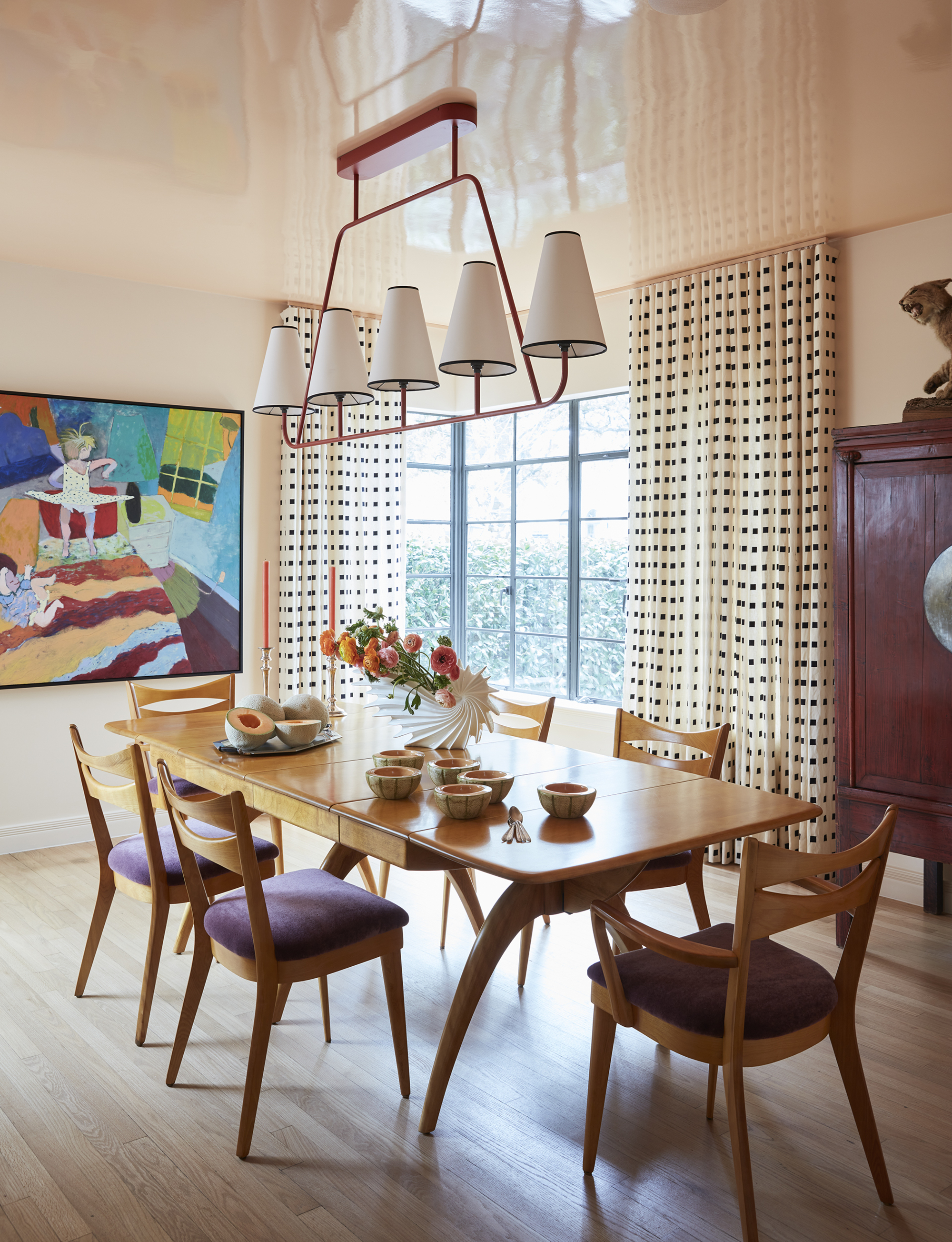
These bold polka dot curtains give this dining space a unique edge, adding personality while not feeling too distracting. Recreate the look with these lightweight polka dot curtains from Amazon.
Some types of curtains can certainly date your space faster than you might expect, so when deciding on your curtain ideas, make sure they're adding to the design, not weighing it down.
It's easy to fall for common curtain mistakes that make your home feel small. "Thick, heavy drapes with ornate tassels, jacquard patterns, or overly shiny finishes tend to feel more old-fashioned unless the entire room leans intentionally traditional," says Nina.
By contrast, certain materials naturally lend themselves to a timeless or contemporary look. For example, "Linen curtains feel effortlessly modern with their airy texture and natural movement," says Nina.
And perhaps surprisingly, the designer adds that, "Velvet curtains can work beautifully, especially in deep, saturated colors," noting that, "Today’s velvets are often lighter weight, without heavy lining or fussy trims."
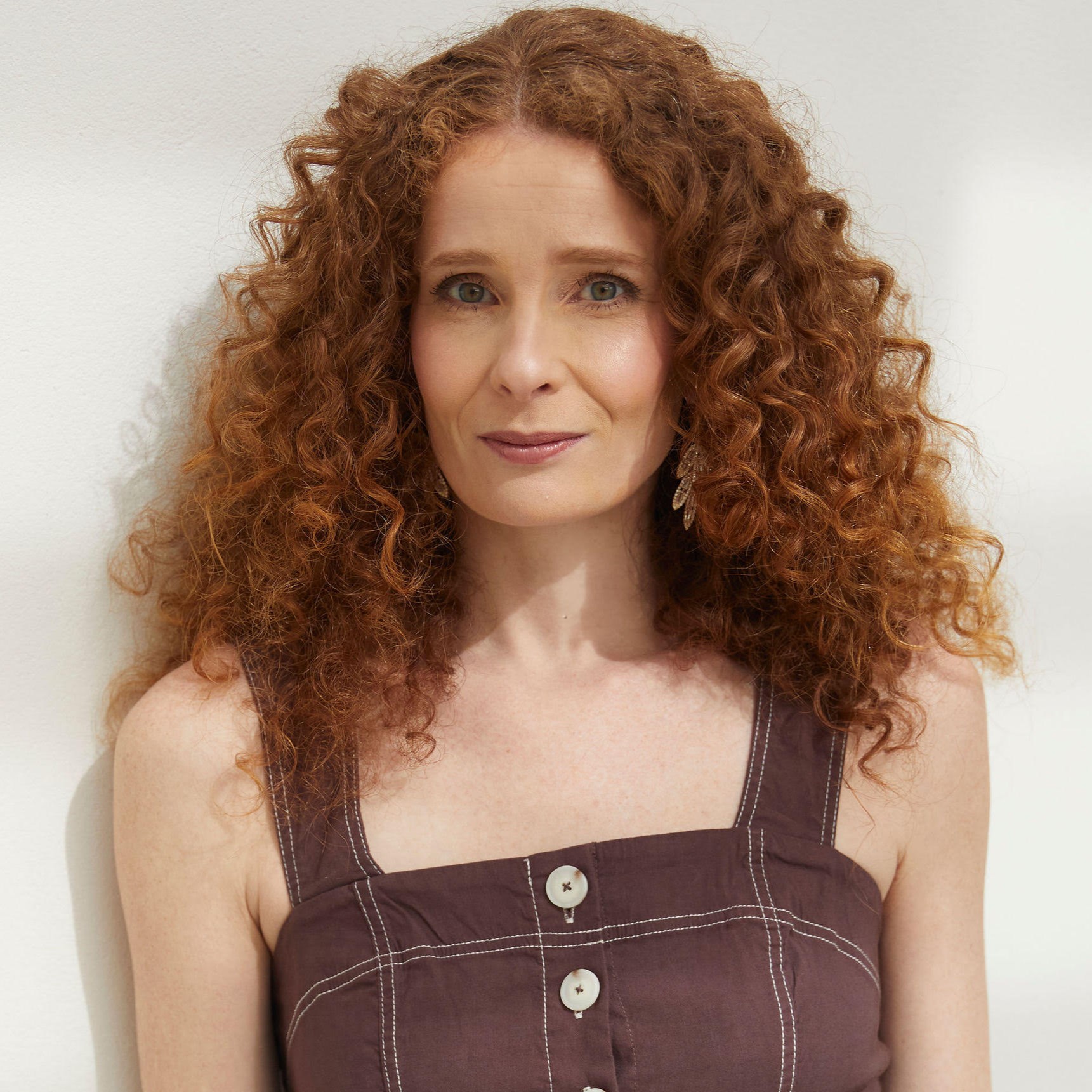
Nina Lichtenstein is a residential interior designer who strives to showcase her in-depth construction and design expertise in her projects. Nina believes that home design should capture a homeowner’s uniqueness by how it serves the person. She has been celebrated for designing, renovating, and building elegant living spaces.
Choosing the best curtain color matters too, of course. Earth tones, warm neutrals, and muted colors feel current, while "bright jewel tones or overly coordinated 'matchy-matchy' curtain schemes can feel stuck in a past decade," says Nina.
Molly Freshwater, co-founder of The Secret Linen Store, adds, "Choosing bold prints, bright color, or even just embracing natural light with semi-sheer linen can make all the difference. Don’t be afraid to let the fabric shout and be part of the story of the room."
But, the real key to ensuring your window treatments don't look out of style is considering the finishing touches for curtains, like hardware and styling. "Things like ceiling-mounted tracks paired with a simple ripple fold curtain treatment create a clean, modern silhouette," says Alykhan.
And don't forget about the length. "Always always go for floor-length curtains (letting them puddle slightly too), window sill grazing curtains are a big no for me," says Molly.
What Are Some Alternative to Curtains?

Roman blinds can be a more subtle way to add color and texture if you don't want to include a full curtain.
If, even after all this, you're still not sure whether curtains are out of style or not, there are plenty of other bedroom and living room window treatment ideas for dressing up your space and providing added privacy.
Not every space needs traditional curtains. Here are some other ways you can go:
- Roman Shades: This style is perfect for tailored softness with less volume. Roman blinds are a sleek and stylish staple that can be adapted to your scheme. Opt for a design in soft linen for the same texture-making effect that curtains can bring.
- Woven Wood Blinds: "Woven wood blinds are the ultimate way to bring natural texture and warmth," says Nina.
- Sheer Panels: Layering sheer panels behind minimalist blackout shades will allow light to come in during the daytime or whenever your thicker curtains are drawn.
- Interior Shutters: Change things up with this unique style. It's perfect "for charming, architectural appeal," says Nina.
- Layered Drapery: Layered drapery has surged in recent textile trends. It's the shade style to pick for a custom, designer-level look that balances softness with structure.
- Roller Blinds: Roller blinds, especially blackout blinds, are ideal for bedrooms as they'll keep the space dark while you're sleeping. However, it's worth pairing them with a lighter curtain, like a voile, to soften their harder edges. Or opt for solid wood shutters for a classic look that also guarantees a good night's sleep.
- Cafe Curtains: French cafe curtains are a great contemporary choice for kitchens or in spaces like a mudroom, entryway, or powder bath.
Want to know what we think? Curtains will always be in style when it comes to our homes. They're a shortcut to softness, they smooth out sharp lines, and add instant movement and texture to a room. As for ensuring the style you pick remains in style? Opt for light, breathable fabrics in neutral tones.

Olivia Wolfe is a Design Writer at Livingetc. She recently graduated from University of the Arts London, London College of Communication with a Masters Degree in Arts and Lifestyle Journalism. In her previous experience, she has worked with multiple multimedia publications in both London and the United States covering a range of culture-related topics, with an expertise in art and design. At the weekends she can be found working on her oil paintings, reading, or antique shopping at one of London's many vintage markets.
